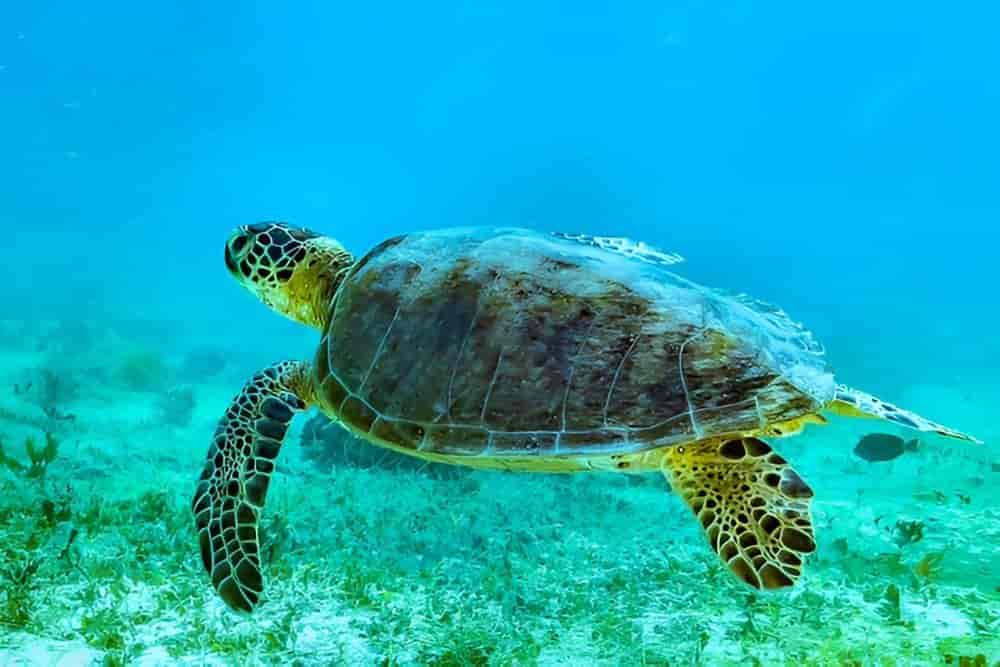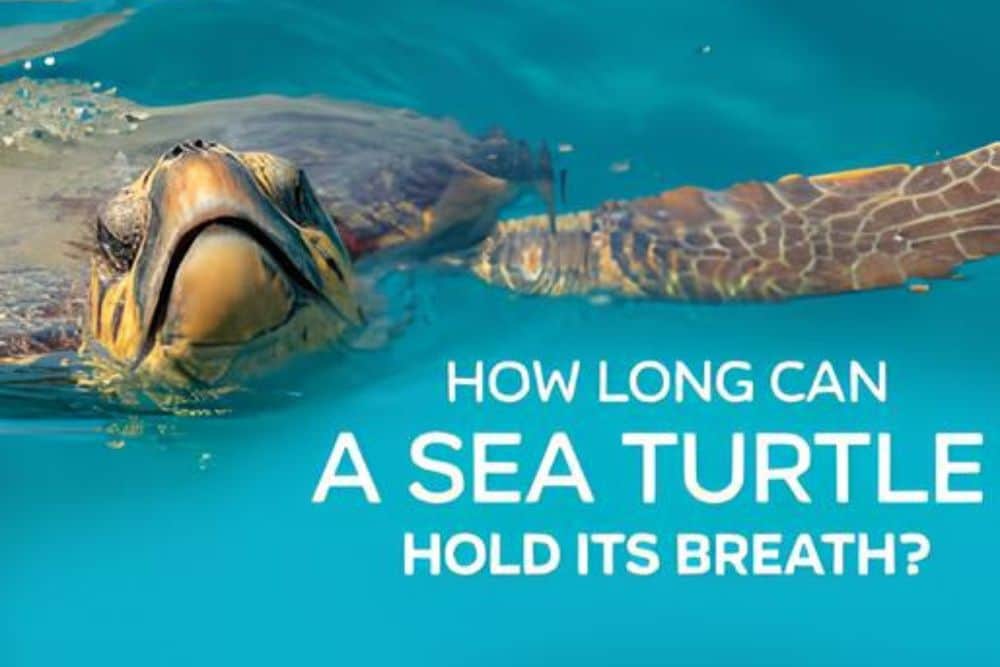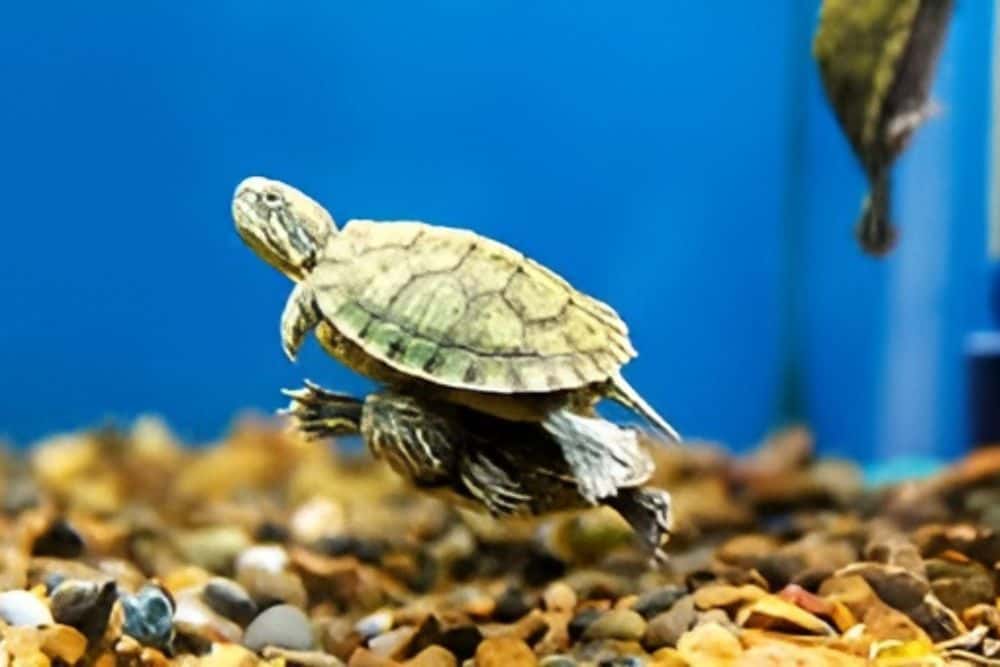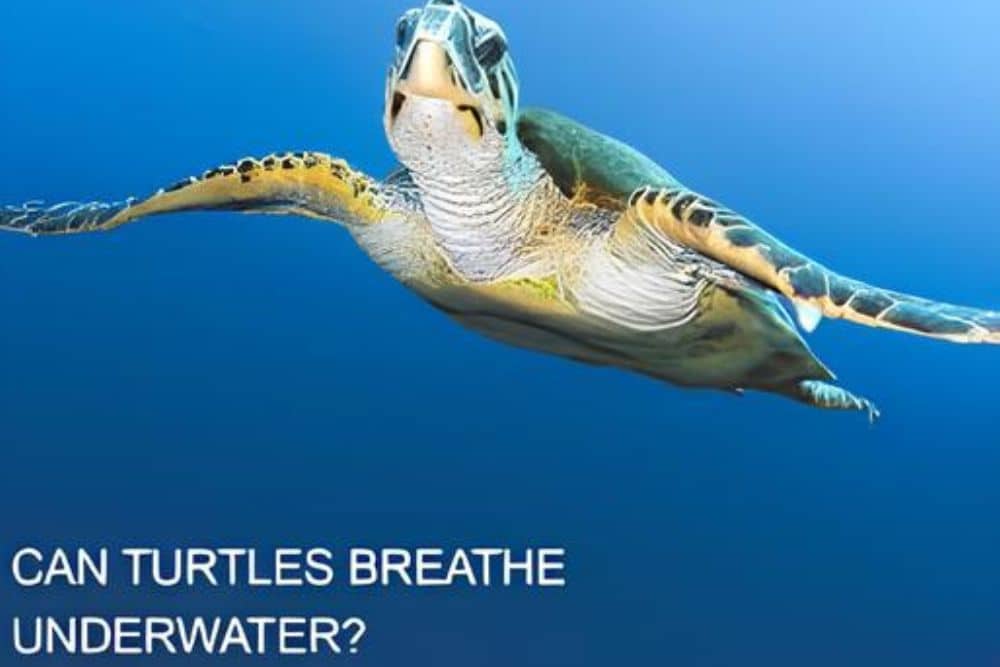Can Turtles Breathe Underwater? Turtles are among the most resilient and adaptable creatures on the planet, with a history dating back over 200 million years. They inhabit many environments, from freshwater rivers and ponds to vast oceans and deserts. Since turtles are often seen swimming or resting underwater for long periods, it’s natural to wonder how they breathe and if they can actually “breathe” underwater like fish.
The short answer is that while turtles cannot truly breathe underwater as fish do, they have developed unique adaptations that allow them to survive in aquatic environments. Can Turtles Breathe Underwater?Understanding these adaptations, from the ability to absorb oxygen in water to specialized organs that help them stay submerged for hours, reveals how turtles have successfully thrived in their habitats. This guide examines the fascinating world of turtle respiration, clarifying common misconceptions and highlighting the incredible versatility of these animals.
Can Turtles Breathe Underwater? Turtles’ Basic Respiratory System
Can Turtles Breathe Underwater? To understand if and how turtles can breathe underwater, it’s essential to understand the basics of their respiratory system. Turtles, unlike fish and amphibians, breathe through lungs rather than gills. This means that they cannot extract oxygen directly from water as fish can. Instead, they rely on their lungs to breathe air, which they typically do at the water’s surface.
Here are the primary characteristics of turtle respiration:
- Lungs for Breathing Air: Turtles have lungs similar to those of other reptiles, enabling them to take in oxygen from the air. Their lungs are relatively large and efficient, allowing them to take deep breaths when they surface.
- Inhalation and Exhalation Mechanism: Unlike mammals, turtles lack a diaphragm. Instead, they use particular muscles in their body cavity to expand and contract their lungs, drawing air in and out.
- Cold-Blooded Metabolism: As ectothermic animals, turtles have a slower metabolism than warm-blooded animals. This allows them to go longer between breaths, which is especially useful for aquatic turtles that spend extended time underwater.
Because turtles depend on their lungs for respiration, they must surface to breathe, although they can stay submerged for long periods due to other unique adaptations.
Types of Turtles and Their Different Respiratory Adaptations
Turtles come in various types, each adapted to its specific habitat and lifestyle. Can Turtles Breathe Underwater? Here’s a look at how different types of turtles manage to stay underwater for extended periods:
- Aquatic Turtles
Aquatic turtles, such as paintedand red-eared sliders, spend much of their lives in freshwater environments. They frequently swim, forage, and even rest underwater. To conserve energy and oxygen, aquatic turtles have several adaptations:
- Underwater Hibernation: During the winter, many aquatic turtles enter a state of brumation (a form of hibernation) and stay submerged for months. While inactive, their metabolic rate drops significantly, allowing them to survive on minimal oxygen.
- Cloacal Respiration: Aquatic turtles have a specialized method of respiration called cloacal respiration. In this method, they can absorb small amounts of oxygen through the walls of their cloaca, an opening at the base of their tail. While this doesn’t fully replace lung breathing, it allows them to stay underwater longer during rest periods or hibernation.
- Sea Turtles
Sea turtles, such as the loggerhead and green sea turtle, are adapted for life in the ocean, where they travel vast distances. While they cannot breathe underwater, they can hold their breath for extended periods:
- Efficient Oxygen Use: Sea turtles have highly efficient lungs and use oxygen effectively, enabling them to stay underwater for extended periods. During active swimming, they may surface every few minutes, but some sea turtles can hold their breath for up to 4-7 hours while resting.
- Lung Adaptations: The lungs of sea turtles are adapted to handle the high pressure of deep dives. They can quickly exchange large amounts of oxygen at the surface, allowing them to stay underwater longer during foraging and diving.
- Semi-Aquatic Turtles
Semi-aquatic turtles, like box and mud, split their time between water and land. While these turtles do not rely on specialized respiratory adaptations as much as their aquatic counterparts, they still possess some beneficial traits:
- Moderate Breath-Holding Ability: Semi-aquatic turtles can hold their breath for extended periods while swimming or foraging, though they must surface frequently to breathe.
- Limited Cloacal Respiration: Some semi-aquatic species have a limited ability for cloacal respiration, aiding them during short underwater activities.
- Land Turtles (Tortoises)
Land turtles, or tortoises, are entirely terrestrial and lack the adaptations for prolonged underwater activity. Although they can hold their breath if submerged, they cannot survive underwater for extended periods. They primarily rely on their lungs and lack the cloacal respiration capability in aquatic and semi-aquatic turtles.
Can Turtles Breathe Underwater? Unique Respiratory Adaptations in Turtles

Turtles’ remarkable adaptations for underwater survival involve a combination of behavioral and physiological strategies:
- Cloacal Respiration
Cloacal respiration, sometimes called “butt breathing,” is one of the most unique respiratory adaptations in turtles. Specific aquatic turtles can absorb oxygen through the thin membranes lining their cloaca. Though limited in its efficiency, this adaptation is invaluable for marine turtles, particularly during cold months when they submerge underwater.
Can Turtles Breathe Underwater? During brumation, turtles drastically slow their metabolism, reducing their oxygen requirements. Cloacal respiration then allows them to take in just enough oxygen from the water to survive without surfacing for long periods, sometimes up to several months.
- Reduced Metabolic Rate
Turtles can significantly slow down their metabolism, a trait that allows them to survive on minimal oxygen during prolonged dives. This is especially helpful during cold weather or inactivity when they need less oxygen to sustain their body functions. By reducing their oxygen needs, turtles can stay submerged for extended times without needing to surface.
- Lung Capacity and Efficiency
Turtles have highly efficient lungs that allow them to take in large amounts of oxygen with each breath. This is especially beneficial for sea turtles, which must stay submerged while foraging and navigating the ocean. Their lungs are adapted for quick gas exchange, allowing them to replenish their oxygen stores efficiently before diving again.
How Long Can Turtles Stay Underwater?

The amount of time a turtle can stay underwater varies widely depending on species, activity level, and environmental conditions:
- Aquatic Turtles: Generally, these turtles can hold their breath for 15 to 30 minutes while active. They can stay underwater for several months during brumation, relying on cloacal respiration.
- Sea Turtles: While actively swimming, sea turtles may need to surface every 5-10 minutes. However, they can remain underwater for 4-7 hours during rest, thanks to their high lung efficiency.
- Semi-Aquatic Turtles: These turtles can usually stay submerged for 30-40 minutes while active. However, they prefer environments where they can quickly surface.
- Land Turtles: Land-dwelling tortoises cannot remain underwater for long. Submerged, they may only survive for a few minutes before needing air.
The Importance of Understanding Turtle Respiration
Learning about turtles’ respiratory adaptations is crucial for conservation efforts, particularly as their habitats face increasing threats. Pollution, habitat loss, and climate change can impact the water quality and availability of suitable environments for turtles, affecting their ability to perform essential functions like brumation or efficient diving.
Can Turtles Breathe Underwater? Understanding how turtles breathe can help pet turtle owners provide the right environment. Aquatic turtles need water deep enough to swim and a surface for air, while land turtles should never be submerged, as they are not adapted to aquatic environments.
Common Misconceptions About Turtles and Breathing
- Turtles Can Breathe Underwater Like Fish: This is a myth. Turtles do not have gills and cannot extract oxygen from water like fish do. They rely on lungs and, in some cases, specialized forms of respiration to stay underwater longer.
- All Turtles Have the Same Underwater Breathing Capabilities: Turtles’ respiratory adaptations vary by species. Aquatic and sea turtles are better equipped for prolonged underwater stays while land-dwelling tortoises cannot survive underwater for long.
- Turtles Only Surface to Breathe: While turtles primarily surface for air, many also surface to regulate their body temperature and bask in the sun, which helps with Vitamin D synthesis and shell health.

Conclusion
While turtles cannot breathe underwater in the same way as fish, they have developed remarkable adaptations that allow them to survive in aquatic environments. From cloacal respiration to lung efficiency and reduced metabolic rates, these features help turtles stay submerged for long periods, depending on their species and habitat. Aquatic and sea turtles are the most adapted to underwater living, while land-dwelling tortoises rely solely on lung breathing and are ill-suited for marine environments.
Understanding turtles’ respiratory systems highlights their adaptability and underscores the importance of preserving their diverse habitats. Whether you’re an enthusiast, a pet owner, or simply intrigued by these ancient reptiles, learning about their unique breathing adaptations gives us a deeper appreciation for turtles’ resilience and evolutionary ingenuity.
FAQ:
Q: How long can turtles breathe underwater?
Ans: For instance, a resting turtle can remain underwater for 4-7 hours whereas a foraging individual may need to surface more frequently. When turtles hold their breath, their heart rate slows significantly to conserve oxygen – up to nine minutes may pass between heart beats!
Q: Do all turtles sleep underwater?
Ans: Aquatic turtles may spend hours sleeping on a dry dock or with their head poking out of the water but they may also sleep underwater for shorter periods of time, coming up to take a breath when necessary. Land turtles don’t swim like aquatic turtles so they can sleep anytime, anywhere.
Q: How long do turtles live?
Ans: The average lifespan of a turtle or tortoise is highly dependent on the species. Some species may only live 10–20 years in captivity, while the maximum lifespan of a tortoise can reach 150 years. In general, most turtle and tortoise species can live well into their 50s if provided appropriate care.
Q: Can turtles survive underwater?
Ans: Sea turtles can hold their breath for several hours, depending on their level of activity. If they are sleeping, they can remain underwater for several hours. In cold water during winter, when they are effectively hibernating, they can hold their breath for up to 7 hours.
Q: Do turtles sleep underwater?
Ans: Typically, turtles sleep for about 4 to 6 hours during the night. Aquatic turtles often sleep underwater, retracting their heads and limbs into their shells. They may also take short naps lasting around 20 minutes.















Leave a Reply